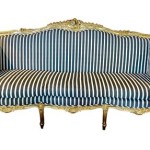Leather Sofa Has White Spots: Causes and Solutions
White spots on a leather sofa can be a frustrating eyesore, detracting from the furniture's aesthetic appeal and raising concerns about potential damage. Understanding the causes of these blemishes is the first step toward effective treatment and prevention.
One common culprit behind white spots is mildew. This type of fungus thrives in damp, poorly ventilated environments. Leather, especially if not properly treated and maintained, can provide an ideal breeding ground for mildew in humid climates or areas with poor air circulation. The resulting white or grayish spots often appear fuzzy or powdery.
Another potential cause is efflorescence. This occurs when soluble salts within the leather or the materials used in its construction are drawn to the surface. As moisture evaporates, these salts are left behind, forming a white, crystalline residue. Efflorescence is more common with aniline and semi-aniline leathers, which are more porous and absorbent.
Fat bloom, also known as lipid migration, can also manifest as white spots. This phenomenon occurs when oils and waxes naturally present in the leather migrate to the surface. It can be triggered by temperature fluctuations or the application of certain cleaning products or conditioners that disrupt the leather's natural balance.
Water spots are another possibility, especially on untreated or poorly sealed leather. These spots appear when water penetrates the leather's surface and leaves behind mineral deposits as it evaporates. The resulting spots can range in color from white to light gray.
Finally, white spots can sometimes be caused by a loss of finish or pigment. This can occur due to abrasion, exposure to sunlight, or the use of harsh cleaning chemicals. The underlying leather, which is typically lighter in color, becomes exposed, resulting in noticeable white patches.
Identifying the specific cause of the white spots is crucial for determining the appropriate course of action. For mildew, cleaning the affected area with a mild leather cleaner and a soft cloth is often sufficient. Ensuring proper ventilation and controlling humidity levels can prevent recurrence.
Efflorescence can be addressed by gently wiping the affected area with a slightly damp cloth. Avoid rubbing vigorously, as this can damage the leather's finish. In more severe cases, a specialized leather cleaner designed to remove salt deposits may be necessary.
Fat bloom can often be remedied by gently buffing the affected area with a soft, dry cloth. This helps to redistribute the oils and waxes back into the leather. In some cases, a leather conditioner may be helpful in restoring the leather's natural suppleness.
Water spots can sometimes be removed by simply wiping the area with a damp cloth. For more stubborn stains, a specialized leather cleaner may be required. Applying a leather protectant after cleaning can help prevent future water spots.
If the white spots are due to a loss of finish or pigment, restoration may require professional assistance. A leather specialist can assess the damage and recommend appropriate repair techniques, such as re-dyeing or refinishing.
Regular cleaning and conditioning are essential for preventing white spots and maintaining the overall health and appearance of a leather sofa. Using a leather cleaner specifically designed for the type of leather is recommended. Avoid using harsh chemicals or abrasive cleaners, which can damage the leather's finish.
Protecting the leather from direct sunlight and excessive heat can also help prevent discoloration and damage. Using coasters and placemats can protect the leather from spills and stains, while regular vacuuming can remove dust and debris that can contribute to the development of mildew.
In addition to regular cleaning and maintenance, proper storage is important for preserving the quality of leather furniture. When storing a leather sofa for an extended period, choose a cool, dry, and well-ventilated location. Avoid storing the sofa in direct sunlight or in areas with high humidity.
By understanding the various causes of white spots on leather sofas and implementing appropriate cleaning and preventative measures, one can maintain the beauty and longevity of this valuable piece of furniture.

Fatty Spue Fat Marks On Leather Www Dictionary Com The

Light Spot In Very Dark Leather Couch What Can I Do Hometalk

Fatty Spue Fat Marks On Leather Www Dictionary Com The

How To Remove Dye Transfer Stains On Leather

How To Clean White Leather Furniture

How To Clean White Leather Furniture
Are There Methods To Removing Stains From Leather Quora

Tips To Prevent Oil Spots On Leather Fibrenew International

How To Clean White Leather Remove Dirt Stains Von Baer

How To Clean And Re A White Leather Couch Fc








